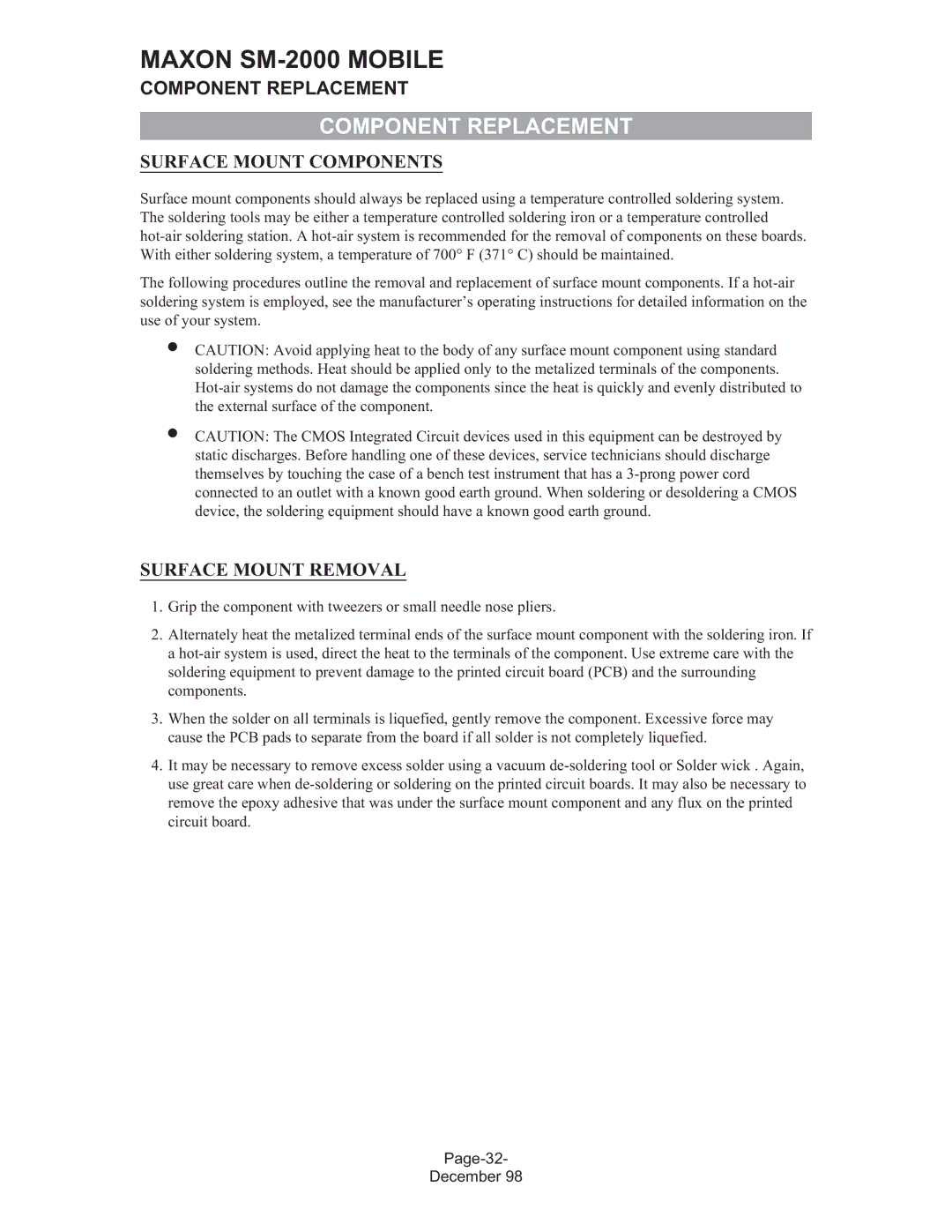MAXON SM-2000 MOBILE
COMPONENT REPLACEMENT
COMPONENT REPLACEMENT
SURFACE MOUNT COMPONENTS
Surface mount components should always be replaced using a temperature controlled soldering system. The soldering tools may be either a temperature controlled soldering iron or a temperature controlled
The following procedures outline the removal and replacement of surface mount components. If a
∙CAUTION: Avoid applying heat to the body of any surface mount component using standard soldering methods. Heat should be applied only to the metalized terminals of the components.
∙CAUTION: The CMOS Integrated Circuit devices used in this equipment can be destroyed by static discharges. Before handling one of these devices, service technicians should discharge themselves by touching the case of a bench test instrument that has a
SURFACE MOUNT REMOVAL
1.Grip the component with tweezers or small needle nose pliers.
2.Alternately heat the metalized terminal ends of the surface mount component with the soldering iron. If a
3.When the solder on all terminals is liquefied, gently remove the component. Excessive force may cause the PCB pads to separate from the board if all solder is not completely liquefied.
4.It may be necessary to remove excess solder using a vacuum
December 98
